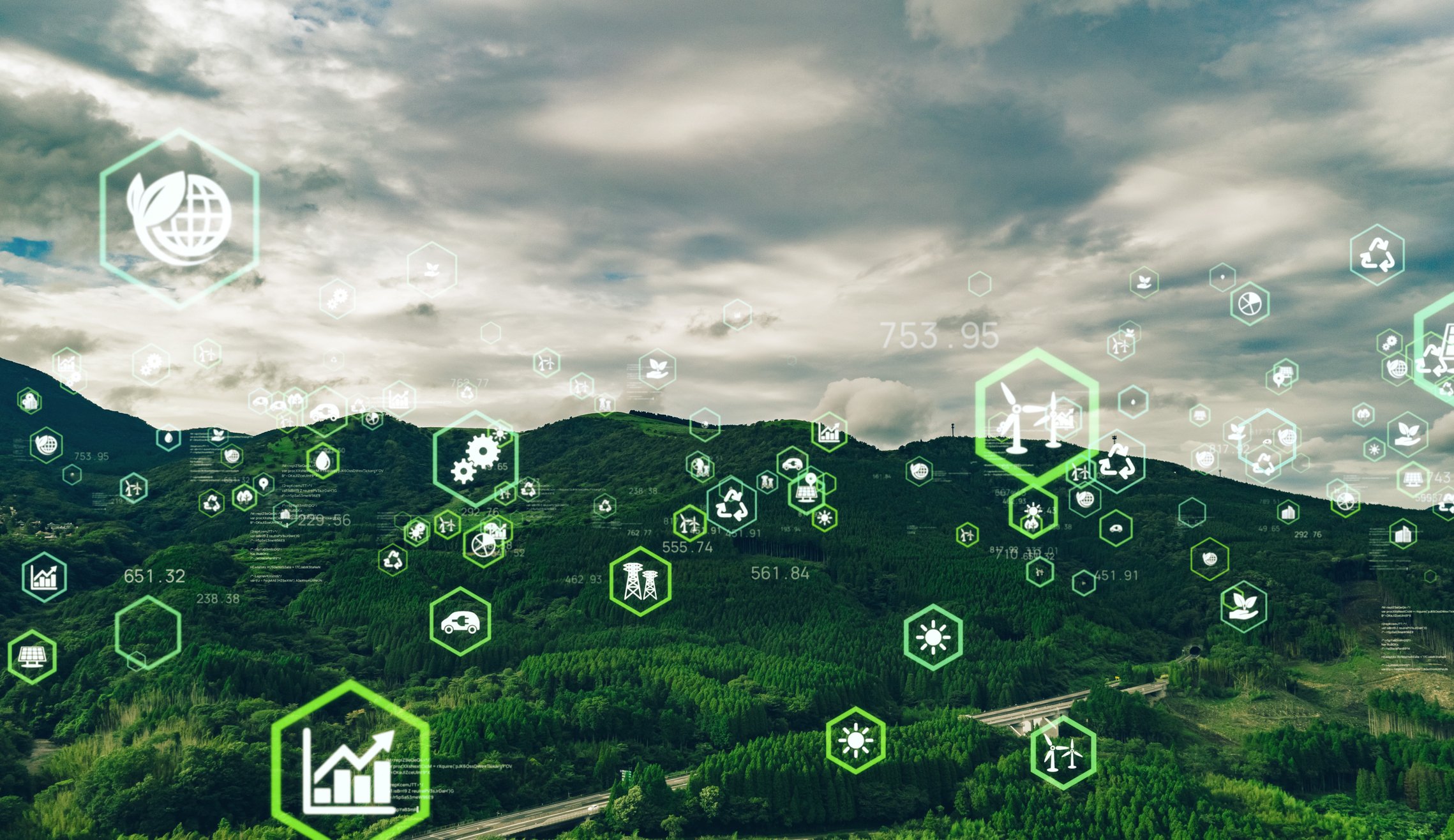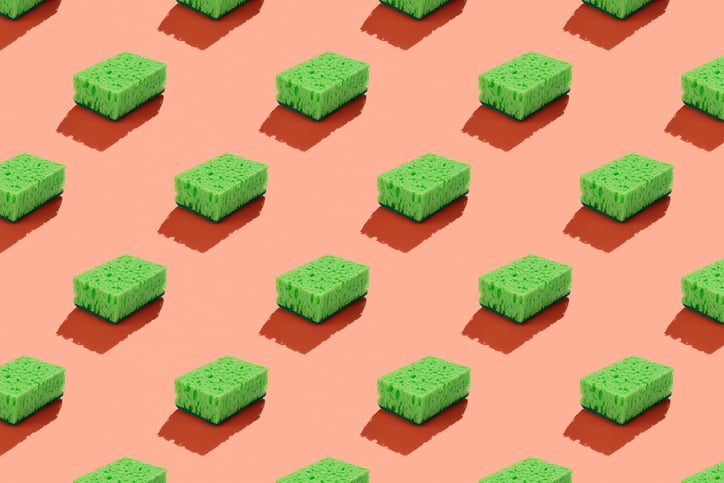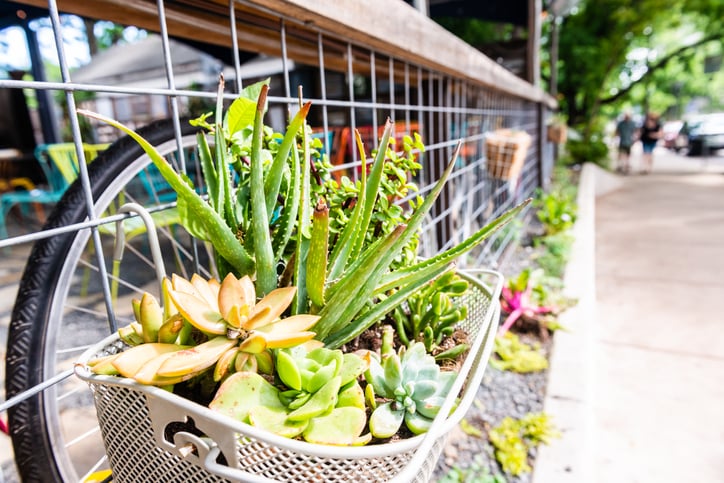
In the age of global warming, the “green” or sustainable city is a hopeful destination that humanity should absolutely strive toward with all of its collective might. To that end, a growing number of green cities and green buildings are taking meaningful steps toward sustainability.
But the “green” label can sometimes cause and conceal a variety of inequities and harmful effects in even the greenest of cities. Sustainability is critical to our future, yet it’s an idea that’s freighted with a variety of different meanings and agendas–not all of which have the best interests of humanity or the Earth at heart.
In this article, we will take a look at two common pitfalls of sustainable cities and explore the ways in which we can avoid them.
Why Are Sustainable Cities Important?
Before we dive in, let’s do a quick refresher on why sustainability is so important to the built environment.

Human caused global warming is accelerating at a much faster pace than anticipated. Many of the impacts of the climate crisis–extreme heat waves, floods, droughts, and the collapse of entire ecosystems–are now “unavoidable” and “irreversible”, according to the latest report by the Intergovernmental Panel on Climate Change (IPCC). To make matters worse, an estimated 3.6 billion people worldwide currently live in places that put them at high risk of death, displacement, or other adverse health effects resulting from climate change.
Most people live in cities; vulnerable, urban heat islands whose populations, far from shrinking, are expected to explode between now and 2050. Cities are also one of the largest contributors to global warming, consuming a staggering 78% of the world’s energy while producing 60% of all man-made carbon emissions. Cities are the imperiled center stages upon which the climate crisis will unfold for most of humanity. Somewhat ironically, they are both a primary cause of global warming and one of the ripest opportunities we have to do something about it.
Time grows short but it’s not too late. If we can make our cities more sustainable, the IPCC report emphasizes, we will have a better shot at adapting to this new planetary reality while also keeping climate change to a lower and more manageable simmer. We can accomplish this by embracing sustainable urban and regional planning; switching from fossil fuels to a renewable power grid; building greener, less-wasteful, and more energy-efficient infrastructure; and protecting–as well as partnering with–the interconnected ecologies that all living things rely on for survival.
Related Article: Understanding the Importance of Sustainable Construction: Why Going Green Is an Imperative, Not a Design Fad
Greenwashing Definition: What Is ‘Greenwashing’?
One of the most pervasive problems in the world of sustainability right now is the phenomenon of “greenwashing.”

Greenwashing refers to the act of conveying misleading or even false information about something to make it appear more sustainable and environmentally friendly than it actually is. Greenwashing has become a go-to marketing strategy for everyone from businesses and governments to non-profits and other groups aiming to sell the public on products or initiatives that might otherwise be found objectionable.
Greenwashing Examples
There are plenty of examples of greenwashing in the world of consumer goods.
Fast-food chain McDonald’s, for instance, was recently called out for plans to make its buildings more energy efficient while ignoring the much larger environmental impacts of the company’s agricultural and livestock supply chains. Responding to the growing demand for a more sustainable world, many major emitters of carbon have attempted to rebrand themselves in recent years with the “green” label. The problem is that their actions often don’t line up with the new image they’re trying to create for themselves. In the energy sector, for example, the term “clean coal” has been deployed to create the false impression that fossil fuels can be burnt without emitting carbon dioxide.
In the world of construction, greenwashing is also used to exaggerate claims of sustainability and disguise the negative impacts of certain projects. A housing development like the Sustainable City in Dubai might market itself as “net-zero” even though this isn’t strictly true. Or let’s say there’s a building with an urban garden on its roof, yet it still relies entirely on fossil-fuels for its power. While it certainly appears “greener” than other buildings on the surface, is it really accurate to describe it as a sustainable or “eco-friendly” structure? This is an example of what a 2007 research paper entitled The Six Sins of Greenwashing identified as the “sin of the hidden trade-off”: when something is labeled as “green” based on a single attribute while ignoring its more harmful characteristics.
One of the most alarming things about greenwashing is that it makes it harder to determine what’s truly sustainable and what isn’t. It also gives the false impression that a single step into the green is far enough when in fact there is a much deeper journey into sustainability that is waiting be embarked upon. Shifting entire societies and industries to a less destructive relationship with the natural world is a daunting enough task as it is without factoring in the need to suss out fact from fiction. Leaders in the construction industry should therefore work to ensure that whatever sustainability claims they make can be backed up with hard evidence. They must also be realistic and transparent about what areas remain to be improved upon. (To learn more about how to prevent greenwashing, consider using this online checklist.)
What Is Green Gentrification? Green Gentrification Explained
One of the biggest problems with sustainable development is that it often goes hand-in-hand with gentrification. A recent report on 99 green-trajectory European and North American cities revealed that wherever sustainable development occurs, property values in surrounding areas go up. The result is green gentrification: the displacement of lower income people as neighborhoods that are “greened” become too expensive and more attractive to wealthier buyers. This form of climate injustice is troubling for a number of reasons, including that most lower-income households are racial or ethnic minorities, as well as the fact that the wealthier people who move in produce more carbon in comparison.

Alternatively referred to as green, environmental, or climate gentrification, this phenomenon of residents getting priced out of sustainably developed neighborhoods has happened in self-proclaimed green metropolises like Austin, Texas and New York City. A prominent example of green gentrification in action is the High Line, a public park project on the west side of Manhattan that forced area residents to relocate when they could no longer afford the increased housing prices.
Green Gentrification Effects
Here’s sociologist and city branding expert Miriam Greenberg speaking to the Vancouver Sun about how “green” city marketing can lead to real estate booms that have negative effects on urban residents:
“When the term sustainability or greening is used, how can anyone argue against it? Green is good,” Greenberg said. “But if you don’t plan for the increased land values and property values that are going to come with this kind of intensive branding and commodification then, while you are attracting capital to the city, more affluent residents, tourism, all that good stuff, it’s also going to drive up the cost of living in a big way.”
We’re used to thinking of gentrification in terms of racial and housing justice, but it can also undermine any sustainability gains your city makes. When lower income urban residents are displaced, they end up moving into less-expensive housing in the outlying suburbs and are forced to make long daily commutes back into the city for work–typically in fossil fuel burning automobiles. In this way, sustainable development projects that don’t factor in issues of land use and affordability can end up shrinking a city’s carbon footprint in one area only to substantially grow it in another.
How Do You Solve Green Gentrification?
Green gentrification shows how sustainability–when primarily steered by the interests of real estate–can be harmful to city residents and even lead to unsustainable outcomes. Construction and city leaders need to be mindful of this reality and do their best to avoid it by embracing more inclusive urban planning and adopting housing policies that protect residents, such as investments in affordable green public housing, rent control, and community land trusts.
Bottom line
All too often, our vision of what a sustainable city looks like verges into a greenwashed fantasy that cuts lower income people out of the equation. As appealing as they are, many of our conceptual renderings of lush emerald promenades and futuristic forest cities seem to depict a world that, while different in surface appearance, continues to be driven in large part by the same forces that made cities such unsustainable places in the first place. It is not enough to build sleek commercial centers and luxury residential high-rises bristling with solar panels and wind turbines. It is not enough to transform brownfields into florid gardens or urban farms if the only people who have access to them are on the upper end of the income scale.